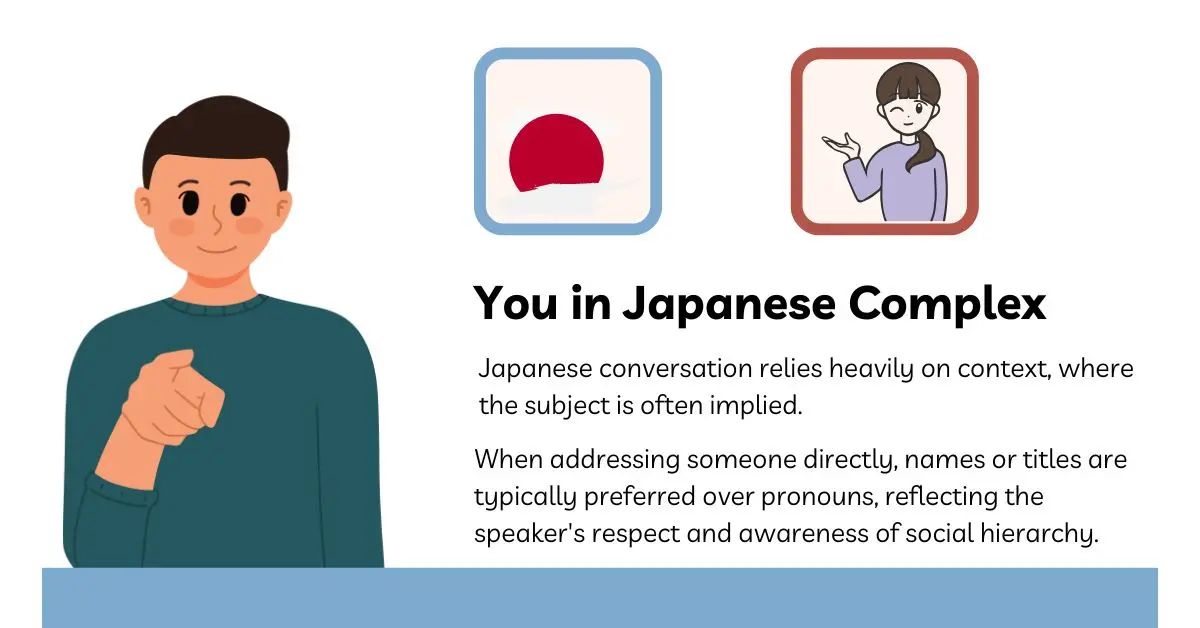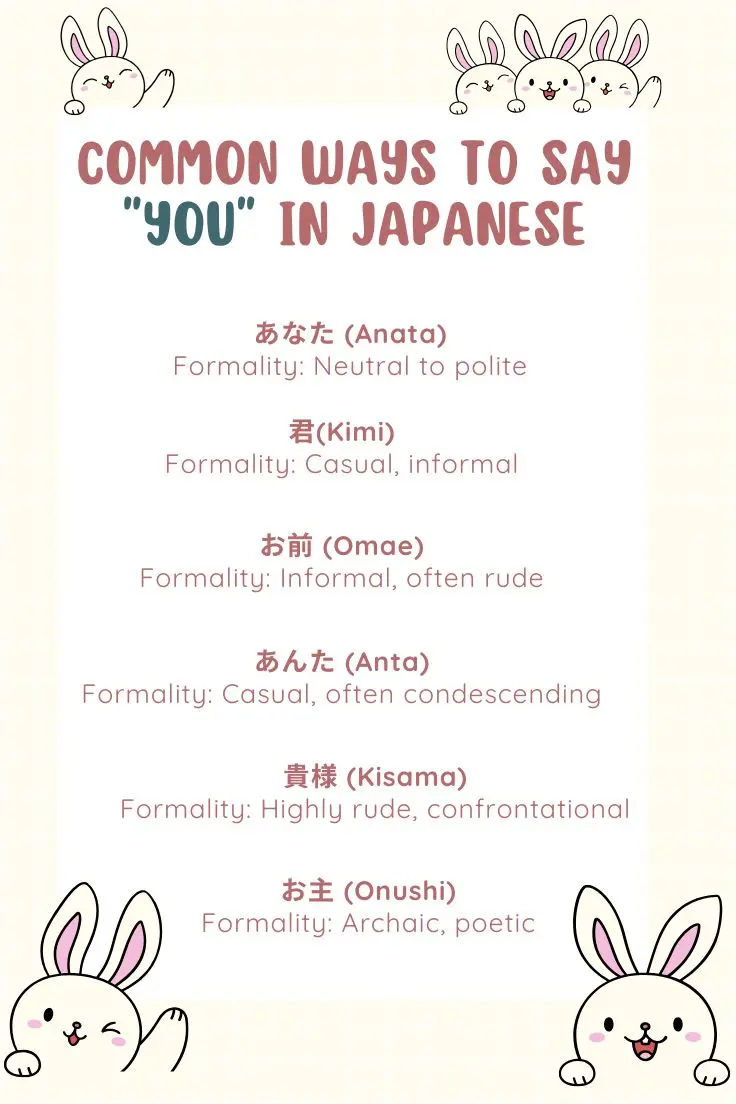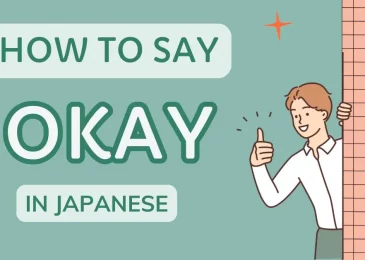The word you in Japanese may seem simple at first glance, but it is surprisingly intricate. Japanese is a language deeply rooted in culture, politeness, and context. These factors make the choice of how to say you highly situational. This guide will take an in-depth look at the different ways to say you in Japanese, their specific uses, and the cultural implications behind them.
Why is Saying “You” in Japanese Complex?
In English, you is a universal pronoun that works in formal, casual, and even intimate settings. However, Japanese operates differently. In this language, directly addressing someone as you is often unnecessary and, in some situations, inappropriate.
Japanese conversation relies heavily on context, where the subject is often implied. When addressing someone directly, names or titles are typically preferred over pronouns, reflecting the speaker’s respect and awareness of social hierarchy.
Understanding how to use the correct form of you is key to navigating the language effectively and respectfully
Common Ways to Say “You” in Japanese
1. あなた (Anata)
- Formality: Neutral to polite
- Usage: Used in formal or neutral contexts, especially when you don’t know the person’s name or when addressing someone politely.
Example:
- あなたはどこから来ましたか?
(Anata wa doko kara kimashita ka?)
“Where are you from?”
Key Notes:
- While anata is polite, it can feel distant in close relationships.
- Wives sometimes use anata affectionately to address their husbands, though this is context-dependent.
2. 君 (Kimi)
- Formality: Casual, informal
- Usage: Often used by men when addressing someone of equal or lower status, such as friends or younger people.
Example:
- 君は何をしているの?
(Kimi wa nani o shiteiru no?)
“What are you doing?”
Key Notes:
- Kimi can sound friendly or slightly condescending depending on the tone.
- It is not suitable for formal or professional settings.
3. お前 (Omae)
- Formality: Informal, often rude
- Usage: Commonly used among close friends or in casual, rough speech, particularly by men.
Example:
- お前はそれを知っているか?
(Omae wa sore o shitteiru ka?)
“Do you know that?”
Key Notes:
- Omae can sound friendly or aggressive depending on the tone and relationship.
- Avoid using this pronoun unless you’re confident it’s appropriate for the context.
4. あんた (Anta)
- Formality: Casual, often condescending
- Usage: Typically used in casual conversations, especially by older women, but it often conveys irritation or superiority.
Example:
- あんた、また遅刻したね。
(Anta, mata chikoku shita ne.)
“You’re late again, aren’t you?”
Key Notes:
- Anta is not a polite term and can easily offend if used improperly.
5. 貴様 (Kisama)
- Formality: Highly rude, confrontational
- Usage: Rarely used in modern speech except in highly aggressive or sarcastic contexts.
Example:
- 貴様、一体何様のつもりだ?
(Kisama, ittai nani-sama no tsumori da?)
“Who do you think you are?”
Key Notes:
- Historically, kisama was a respectful term, but it has evolved into a highly offensive word.
- You’ll mostly encounter kisama in anime, manga, or confrontational dialogue.
6. お主 (Onushi)
- Formality: Archaic, poetic
- Usage: Found in historical dramas, period pieces, or certain regional dialects.
Example:
- お主も悪よのう。
(Onushi mo aku yo nou.)
“You’re quite the schemer, aren’t you?”
Key Notes:
- Onushi carries an old-fashioned or dramatic tone and is not used in modern, everyday conversation.
Indirect Ways to Say “You”
In Japanese, directly saying you can feel too direct or impolite. Here are some alternative strategies:
- Use the person’s name with a title:
田中さん、これを見てください。
(Tanaka-san, kore o mite kudasai.)
“Tanaka, please look at this.”
- Refer to their role or relationship:
先生、何をお考えですか?
(Sensei, nani o okangae desu ka?)
“Teacher, what do you think?”
- Omit the subject entirely:
どこへ行きますか?
(Doko e ikimasu ka?)
“Where are you going?”
Cultural Insights on Using “You”
- Politeness is Paramount:
The Japanese language places a high emphasis on politeness. Using direct pronouns like omae or anta with strangers or superiors can come across as offensive. - Tone Changes Everything:
Even casual pronouns can sound rude if said with a sharp or impatient tone. Conversely, words like omae can sound friendly in the right context with a warm tone. - Social Hierarchy Matters:
Always consider the relationship and social status of the person you’re addressing. Using kimi with a superior, for instance, would be inappropriate.
When to Avoid Saying “You”
Japanese speakers frequently avoid using you in favor of:
- Implying the subject through context: Japanese grammar often allows sentences without a stated subject.
- Using a person’s name with an honorific: This approach feels more personal and respectful.
- Referring to someone’s role or title: This adds an extra layer of politeness.
Learn more with MochiKanji
MochiKanji is a language-learning app designed for mastering Japanese vocabulary, grammar, and conversational skills. It includes:
- Interactive Flashcards to learn pronouns in context.
- Conversation Practice to improve situational usage of you.
- Cultural Insights to help understand when and how to use pronouns appropriately.
Download MochiKanji to enhance your Japanese learning journey today!
Conclusion
Learning how to say you in Japanese is a nuanced process that reflects the language’s depth and cultural values. By understanding the various pronouns, their implications, and when to use them, you’ll communicate more effectively and respectfully in Japanese.
With consistent practice and cultural awareness, you’ll navigate these complexities with confidence. Start incorporating these pronouns into your learning, and remember: practice makes perfect!








